Ditapis dengan
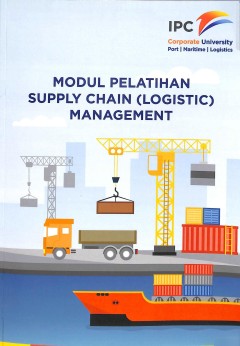
Modul Pelatihan : Supply Chain (Logistic) Management
This module is an introductory to Supply Chain Management, anad part of module of FIATA Higher Diploma in Supply Chain Management
- Edisi
- -
- ISBN/ISSN
- -
- Deskripsi Fisik
- 92 p., 29.5 cm.
- Judul Seri
- -
- No. Panggil
- IPC GUI SUP s

Green Maritime Logistics and Sustainability
The environmental consequences of international trade and transport have gained importance as a result of the current climate debate. Products are increasingly being produced in one part of the world, transported to another country and then redistributed to their final country of consumption. Since more than 80% of world trade tonnage measured in metric tons is carried by seagoing vessels, mar…
- Edisi
- 2012
- ISBN/ISSN
- 978-1-78052-340-8
- Deskripsi Fisik
- 20
- Judul Seri
- Maritime Logistics
- No. Panggil
- TXT LO LIN s

Theoritical aspects of logistics training
Authors discuss about main training needs and problems in the logistics as main driving motive for learning and training process organization in the universities and at the non-formal training places – work places, courses and training organizations. All driving motives can be named as internal and external forces which influence persons. In many cases external driving motives are related to …
- Edisi
- 2007, Vol XXII, No 1, 14–18
- ISBN/ISSN
- 1648-3480
- Deskripsi Fisik
- 6 p .
- Judul Seri
- Transport
- No. Panggil
- ATC LO PAL t

Third Party Logistics Choice
Logistics managers were surveyed regarding decisions (1) to use third party logistics services and (2) practices regarding the selection of third party providers. Responses suggest that decisions to use third party logistics services are not driven by strong preconceptions, pro or con, regarding the attractiveness of the third party option. Further, attitudes toward the use of third party logis…
- Edisi
- Vol. 6 Iss 2 pp. 93 - 102
- ISBN/ISSN
- -
- Deskripsi Fisik
- 13 p.
- Judul Seri
- The International Journal of Logistics Management
- No. Panggil
- ATC LO MCG t

Third party logistics services- a Singapore perspective
Focusses on three constructs that we believe are the primary determinants of the future usage of third party logistics services. These constructs are: extent of use of the third party logistics services; decision making process for choosing contract logistics services provider; and impact of the usage of contract logistics services on the organisation. An empirical research was carried out in…
- Edisi
- Vol. 29 No. 9, 1999, pp. 569-587
- ISBN/ISSN
- 0960-0035
- Deskripsi Fisik
- 25 p.
- Judul Seri
- Third party logistics services
- No. Panggil
- ATC LO BHA t

Third party logistics services usage by large Australian firms
Outsourcing of logistics functions is a business dynamic of growing importance in Australia (for example, see [1]) and elsewhere in the world (see, for example [2,3]. Third party logistics involves the use of external companies to perform logistics functions which have traditionally been performed within an organization. The functions performed by the third party can encompass the entire logist…
- Edisi
- Vol. 26 No. 10, 1996, pp. 36-45.
- ISBN/ISSN
- 0960-0035
- Deskripsi Fisik
- 13 p.
- Judul Seri
- International Journal of Physical Distribution & Logistics Management
- No. Panggil
- ATC LO DAP t

Third‐party logistics in Europe – five years later
Discusses the results of a survey among shippers in several European countries involved in outsourcing their transport, warehousing and other logistics activities. The survey, which is a joint initiative of the universities of Cranfield, Eindhoven, LinkoÈ ping and Rotterdam (Erasmus) and of ManDat GmbH, is a sequel to a similar survey carried out five years ago and has led to a renewed insigh…
- Edisi
- Vol. 30 No. 5, 2000, pp. 425-442.
- ISBN/ISSN
- 0960-0035
- Deskripsi Fisik
- 24 p
- Judul Seri
- Third-party logistics in Europe
- No. Panggil
- ATC LO LAA t

Third-Party Logistics- Is There a Future
In this article, the authors describe the results of a study on strategies of third‐party logistics (TPL) providers. The size of the TPL industry and the different requirements placed on logistics as opposed to basic services, such as transportation or public warehousing, justify the need to treat TPL as a separate industry. The authors describe three waves of entrants into the TPL industry a…
- Edisi
- Vol. 10 Iss 1 pp. 59 - 70
- ISBN/ISSN
- -
- Deskripsi Fisik
- 17 p.
- Judul Seri
- The International Journal of Logistics Management
- No. Panggil
- ATC LO BER t C.1
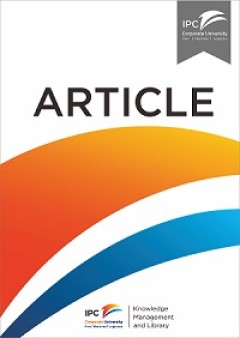
Time compression in the supply chain
Claims that time compression is a powerful source of competitive advantage that remains relatively underutilized in UK busineses. Details the research undertaken by the Warwick Manufacturing Group’s time compression programme (TCP) on the applications of time‐based approaches with a number of partner companies. Explores the nature of time compression in relation to the fundamental principle…
- Edisi
- Vol. 96 Issue: 2, pp.12-16
- ISBN/ISSN
- -
- Deskripsi Fisik
- 7 p.
- Judul Seri
- Industrial Management & Data Systems
- No. Panggil
- ATC LO BEE t

Time compression in the supply chain : information management is the vital …
Claims that time compression is a powerful source of competitive advantage that remains relatively underutilized in UK busineses. Details the research undertaken by the Warwick Manufacturing Group’s time compression programme (TCP) on the applications of time‐based approaches with a number of partner companies. Explores the nature of time compression in relation to the fundamental principle…
- Edisi
- Vol. 96 Issue: 2, pp.12-16
- ISBN/ISSN
- 0263-5577
- Deskripsi Fisik
- 7 p.
- Judul Seri
- Time compression in the supply chain
- No. Panggil
- ATC LO BEE t C.1

Transportation concerns of foreign firms in China
In recent years, many foreign firms have flocked to China (People’s Republic of China) to take advantage of the opportunities in the large market. However, some of these firms have faced logistical problems in transporting and distributing their goods in China. Identifies the transportation problems faced by foreign firms operating in China and examines the possible actions and factors for mi…
- Edisi
- Vol. 30 Iss 1 pp. 35 - 54
- ISBN/ISSN
- 0960-0035
- Deskripsi Fisik
- 23 p.
- Judul Seri
- International Journal of Physical Distribution & Logistics Management
- No. Panggil
- ATC LO PHU t C.1

Twenty years of IJLM: evolution in research
The purpose of this paper is to evaluate research trends observed in the International Journal of Logistics Management (IJLM) during its first 20 years of publication. Design/methodology/approach – A content analysis was conducted of the IJLM’s first 20 years of publication (330 articles in total) to identify changing trends in subject matter, use of theory, type of research methodology, an…
- Edisi
- Vol. 23 No. 1, 2012 pp. 4-30
- ISBN/ISSN
- 0957-4093
- Deskripsi Fisik
- 29 p.
- Judul Seri
- The International Journal of Logistics Management
- No. Panggil
- ATC LO TRO t C.1

Views Of Logistics Service Providers On Modularity In Logistics Services
The objective of this paper is to increase understanding of the concept of service modularity and to present examples of applications of modularity approach in logistics services. This aim is pursued with an empirical case study, consisting of interviews of 25 logistics service providers (LSPs). Themes found in the literature are used in the interviews and in the analysis of the interviews. The…
- Edisi
- Vol. 16, No. 1, 34–50,
- ISBN/ISSN
- 1469-848X
- Deskripsi Fisik
- 18 p.
- Judul Seri
- International Journal of Logistics Research and Applications
- No. Panggil
- ATC LO RAJ v C.1

Virtual logistics- transport in the marketspace
While transport seems to be increasingly constrained in its mission to supply services which are continuous, costless and available in all directions, the telecommunications system seems to have no such constraints and to be developing ever more rapidly in terms of inter‐connectivity, falling costs and multi‐directionality. It would seem to be impossible to contemplate the future demand for…
- Edisi
- Vol. 28 No. 7, 1998, pp. 547-574,
- ISBN/ISSN
- 0960-0035
- Deskripsi Fisik
- 30 p.
- Judul Seri
- International Journal of Physical Distribution & Logistics Management
- No. Panggil
- ATC LO CRO v C.1

Computers in retailing
Major changes have taken place in the application of information technology in retailing. Looks at the opportunities for improving use of data within the retail environment through modern technology in the early 1980s
- Edisi
- Vol. 29 No. 7/8, 1999, pp. 465-476.
- ISBN/ISSN
- 0960-0035
- Deskripsi Fisik
- 14 p .
- Judul Seri
- International Journal of Physical Distribution & Logistics Management
- No. Panggil
- ATC LO WAL c C.1

Are shippers satisfied with the diversified provision of logistics service by…
This paper explores the current feature of the service provision in the shipping industry and contributes to a more thorough understanding of the industry. A questionnaire was developed to examine the performance of service providers assessed by international shippers in the UK and South Korea. We find that British shippers are more likely to be satisfied with the diversified service provision …
- Edisi
- Volume 25 Number 2 December 2009 pp.237-251
- ISBN/ISSN
- -
- Deskripsi Fisik
- 15 p.
- Judul Seri
- Asian journal of shipping & logistics
- No. Panggil
- ATC LO JUN a

Are supply (driven) chains forgotten?
This paper explores the current feature of the service provision in the shipping industry and contributes to a more thorough understanding of the industry. A questionnaire was developed to examine the performance of service providers assessed by international shippers in the UK and South Korea. We find that British shippers are more likely to be satisfied with the diversified service provision …
- Edisi
- Volume 25 Number 2 December 2009 pp.237-251
- ISBN/ISSN
- -
- Deskripsi Fisik
- 15 p.
- Judul Seri
- The Assian Journal Shipping and Logistics
- No. Panggil
- ATC LO KOO a C.1

Analysing Materials Handling Needs in Concurrent/Simultaneous Engineering
In simultaneous/concurrent engineering (SE/CE), many functions are performed concurrently; however, manufacturing logistics design is seldom considered. Presents an integrated methodology for the design of manufacturing logistics and links it with early phases of product design. The concept of “adaptability factor” is proposed, linking choice of manufacturing technology to handling operatio…
- Edisi
- Management, Vol. 14 No. 9, 1994, pp. 68-82.
- ISBN/ISSN
- 0144-3577
- Deskripsi Fisik
- 17 p.
- Judul Seri
- International Journal of Operations & Production Management
- No. Panggil
- ATC LO GUP a C.1

A Review and Evaluation of Logistics Performance Measurement Systems
Logistics encompasses a complex set of activities which require a collection of metrics to adequately measure performance. Ideally, the performance metrics used should be selected and maintained as a system, so they complement and support each other and provide the decision makers with a well balanced picture of the logistics process. Often in practice, however, performance measurement systems …
- Edisi
- Vol. 6 Iss 1 pp. 61 - 74
- ISBN/ISSN
- -
- Deskripsi Fisik
- 18 p.
- Judul Seri
- The International Journal of Logistics Management
- No. Panggil
- ATC LO CAP a C.1

Seaport resilience to climate change: mapping vulnerability to sea-level rise
This paper examines the likely impact of extreme weather events and rising sea levels on key port logistics operations and infrastructure. It develops a 3D model to assess the vulnerability of seaports vis-a`-vis operational assets to sea-level rise. Key operational assets were first identified and geo-referenced on a high-resolution digital terrain model. In addition, perceptions of threat of …
- Edisi
- Vol. 60, No. 1, 65–78
- ISBN/ISSN
- -
- Deskripsi Fisik
- 15 p.
- Judul Seri
- Journal of Spatial Science,
- No. Panggil
- ATC MG CHH s C.1

Transport integration tools for supply chain management
Over the last 3 years, research carried out by Cardiff University has studied the opportunities to integrate freight transport better into supply chains. The paper stems from this work. After asserting the principal reasons why better transport integration is important, it charts a range of diagnostic tools that were deployed. The tools represent a menu of instruments that aim to aid understand…
- Edisi
- Vol. 9, No. 1, March 2006, 57–74
- ISBN/ISSN
- 1746-8809
- Deskripsi Fisik
- 19 p.
- Judul Seri
- International Journal of Logistics Research and Applications
- No. Panggil
- ATC MG STE t C.1
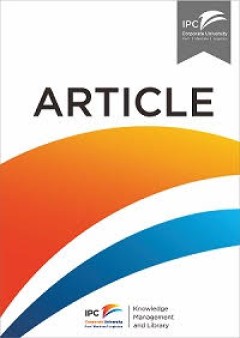
Port-centric logistics, dry ports and offshore logistic hubs- strategies to o…
- Edisi
- Vol 39 Issue: 2, pp. 207-226
- ISBN/ISSN
- 0308–8839
- Deskripsi Fisik
- -
- Judul Seri
- Maritime Policy & Management: The flagship journal of international shipping and port research
- No. Panggil
- ATC PO MON p
- Edisi
- Vol 39 Issue: 2, pp. 207-226
- ISBN/ISSN
- 0308–8839
- Deskripsi Fisik
- -
- Judul Seri
- Maritime Policy & Management: The flagship journal of international shipping and port research
- No. Panggil
- ATC PO MON p

New Models for Sustainable Logistics Internalization of External Costs in Inv…
Logistics of transport systems is a key driver for the growth of whatever economy. Freight transport allows production systems or common citizens to receive or send materials or finished goods required by processes as well as by everyday life However, the overall transport sector accounts worldwide for more than half of global liquid fossil fuels consumptions which, in turn, is responsible for …
- Edisi
- 2015
- ISBN/ISSN
- 978-3-319-19710-4
- Deskripsi Fisik
- 111P
- Judul Seri
- New Models for Sustainable Logistics
- No. Panggil
- ATC MG DIG n
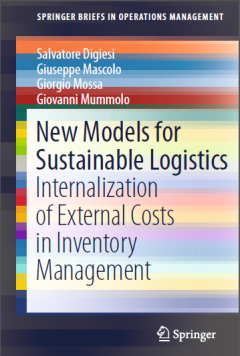
New models for sustainable logistics: internalization of external costs in in…
- Edisi
- -
- ISBN/ISSN
- 978-3-319-19710-4
- Deskripsi Fisik
- -
- Judul Seri
- -
- No. Panggil
- TXT LO DIG n
- Edisi
- -
- ISBN/ISSN
- 978-3-319-19710-4
- Deskripsi Fisik
- -
- Judul Seri
- -
- No. Panggil
- TXT LO DIG n
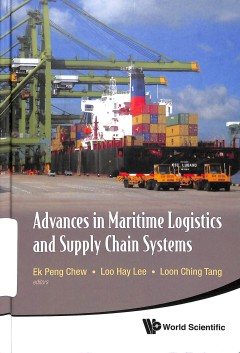
Advances in Maritime Logistik and Supply Chain Systems
This timely book discusses the recent developments in maritime logistics, an important specialized area for the global economy. It includes issues such as the recent economic crisis, port competition and development, and provides insights and trends relating to these issues. Consisting of renowned researchers worldwide, the primary objective of the book identifies some of the new problems and c…
- Edisi
- -
- ISBN/ISSN
- 13-978-981-4329-85-9
- Deskripsi Fisik
- xvi, 315 p. ; 26 cm.
- Judul Seri
- -
- No. Panggil
- TXT LO SON m

Institutional challenges to intermodal transport and logistics : governance i…
While the operational realities of intermodal transport are relatively well known, the institutional challenges are less well understood. This book provides an overview of intermodal transport and logistics including the policy background, emerging industry trends and academic approaches. Establishing the three key features of intermodal transport geography as intermodal terminals, inland logis…
- Edisi
- -
- ISBN/ISSN
- 978-1-4724-2321-4
- Deskripsi Fisik
- xx, 219 p., 23 cm
- Judul Seri
- -
- No. Panggil
- TXT LO MON i

Cargo Theft, Loss Prevention, And Supply Chain Security
Part history of cargo theft, part analysis and part how-to guide, this book is the one source you need to in order to understand every facet of cargo theft and take steps to prevent losses. It supplies a massive amount of cargo theft statistics and provides solutions and best practices to supply chain security. Providing you with cutting-edge techniques so you can prevent losses, this book will…
- Edisi
- -
- ISBN/ISSN
- 978-0-12-416007-1
- Deskripsi Fisik
- xx, 366p. ; 25cm.
- Judul Seri
- -
- No. Panggil
- TXT LO BUR c C.1
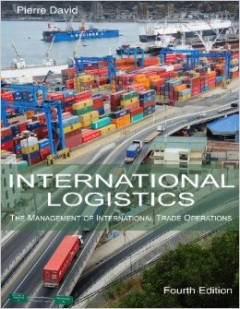
International Logistics: The Management of International Trade Operations
A full-color textbook covering all of the concepts of international logistics. This textbook is written from the perspective of the users, those managers who are actively exporting or importing goods or are otherwise involved in international trade operations. All of the relevant issues are thoroughly explained, including documentation, terms of payment, terms of trade (2010 Incoterms rules), e…
- Edisi
- 4th ed.
- ISBN/ISSN
- 978-0-9894906-0-3
- Deskripsi Fisik
- xxvi, 695p. ; 28cm.
- Judul Seri
- -
- No. Panggil
- TXT LO DAV i

An automated system for motor carrier selection
- Edisi
- Vol. 103 Iss 7 pp. 533 - 539
- ISBN/ISSN
- 0263-5577
- Deskripsi Fisik
- 9 p.
- Judul Seri
- Industrial Management & Data Systems
- No. Panggil
- ATC LO KUO a
- Edisi
- Vol. 103 Iss 7 pp. 533 - 539
- ISBN/ISSN
- 0263-5577
- Deskripsi Fisik
- 9 p.
- Judul Seri
- Industrial Management & Data Systems
- No. Panggil
- ATC LO KUO a

Locating dry ports on a network : a case study on Tianjin port
A mathematical model for optimizing the location of dry ports is developed. The objective is to minimize the sum of the transportation costs and the fixed facility opening/closing costs. Unlike previous research on this subject, the possibility of closing existing dry ports is investigated. The dry port location problem is formulated as an integer programming and it is shown that the CFLP is a …
- Edisi
- -
- ISBN/ISSN
- 0308-8839
- Deskripsi Fisik
- 19 p.
- Judul Seri
- -
- No. Panggil
- ATC PO HUA l
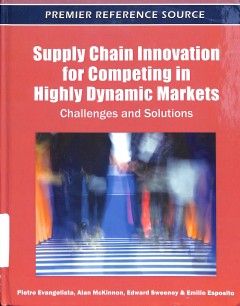
Supply Chain Innovation For Competing In Highly Dynamic Markets : Challenges …
Rapid changes in technological development are forcing businesses to continuously innovate to improve their competitiveness, which is particularly evident in logistics and supply chain management (SCM), where innovation impacts both the strategic and operational levels. Supply Chain Innovation for Competing in Highly Dynamic Markets: Challenges and Solutions investigates the role of innovation…
- Edisi
- -
- ISBN/ISSN
- 978-1-60960-585-8
- Deskripsi Fisik
- xiv, 343 p, 29 cm
- Judul Seri
- -
- No. Panggil
- TXT LO EVA s
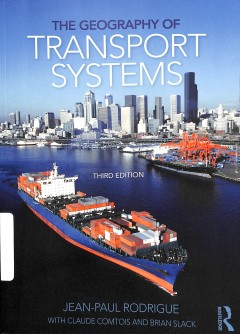
The geography of transport systems
The geography of transport systems is now into its third edition,. substantial efforts have been made to build on the first and second editions' success by improving the content and this structure.
- Edisi
- 3rd Ed.
- ISBN/ISSN
- 978-0-415-82254-1
- Deskripsi Fisik
- 411 p., 23 cm
- Judul Seri
- -
- No. Panggil
- TXT LO ROD g
Multimodal transport
- Edisi
- Ed. 3
- ISBN/ISSN
- 987-981-4342-28-5
- Deskripsi Fisik
- 220 p.
- Judul Seri
- -
- No. Panggil
- TXT LO CHO m
- Edisi
- Ed. 3
- ISBN/ISSN
- 987-981-4342-28-5
- Deskripsi Fisik
- 220 p.
- Judul Seri
- -
- No. Panggil
- TXT LO CHO m

The logistics and supply chain toolkit : over 90 tools for transport, warehou…
- Edisi
- -
- ISBN/ISSN
- 978-0-7494-6808
- Deskripsi Fisik
- xi, 313 p, 22 cm
- Judul Seri
- -
- No. Panggil
- LO RIC t
- Edisi
- -
- ISBN/ISSN
- 978-0-7494-6808
- Deskripsi Fisik
- xi, 313 p, 22 cm
- Judul Seri
- -
- No. Panggil
- LO RIC t

Warehouse management
To paraphrase Mark Twain, rumours of the demise of warehousing have been greatly exaggerated. The warehouse continues to play a major role within supply chains and will continue to do so for the foreseeable future, although it may appear in different guises. The introduction of concepts such as Just in Time suggested the requirement for warehouses as large storage entities was a thing of the pa…
- Edisi
- -
- ISBN/ISSN
- 978 0 7494 6074 7
- Deskripsi Fisik
- xvii. 317p
- Judul Seri
- -
- No. Panggil
- TXT LO RIC w

The well planned menu – logistics for an airline catering company
Describes the successful implementation by a major airline′s catering division of a comprehensive, computer‐controlled logistics system comprising two separate, fully automated warehousing and ordering systems, making order error a rarity and enabling three‐shift operation which has significantly increased profitability.
- Edisi
- Vol. 8 Issue: 3, pp.43-44
- ISBN/ISSN
- -
- Deskripsi Fisik
- 41 p.
- Judul Seri
- Logistics Information Management
- No. Panggil
- ACT LO SZY t
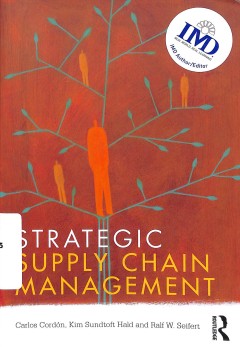
Strategic supply chain management
The supply chain is at the heart of every successful business organization's decision-making process. This textbook explains how to create a winning supply chain management strategy by spotlighting how senior executives in European and US companies have turned their supply chains into strategic weapons designed to convert threats, risks and outside pressures into competitive advantages. Strate…
- Edisi
- -
- ISBN/ISSN
- 978-0-415-59176-8
- Deskripsi Fisik
- ix, 278 p., ; 24 cm
- Judul Seri
- -
- No. Panggil
- LC 658.785 COR s

Managing logistics and supply chain challenges : singapore insights and persp…
Strategically located in Asia, Singapore has built on its geographical advantage to become one of the world s leading logistics hubs and a preferred location for leading manufacturers to establish regional distribution centres. Its world-class infrastructure, excellent connectivity, efficient customs, pro-business environment, educated workforce and stable government have made Singapore a compe…
- Edisi
- -
- ISBN/ISSN
- 978-981-4524-865
- Deskripsi Fisik
- xx, 467 p, 23 cm
- Judul Seri
- -
- No. Panggil
- LC 658.785 WEN m

Warehousing management : a complete guide to improving efficiency and minimiz…
Warehouses are an integral part of the modern supply chain, involved in sourcing, producing and distributing goods. However, due to the complexities of warehouse operations they can often be one of the most costly parts of the supply chain. Their efficient management is therefore critical for minimizing cost and contributing to an effective and efficient supply chain. Warehouse Management pro…
- Edisi
- -
- ISBN/ISSN
- 978-0-7494-60747
- Deskripsi Fisik
- xvi, 324 p., ; illus : 23 cm
- Judul Seri
- -
- No. Panggil
- LC 658.785 RIC w
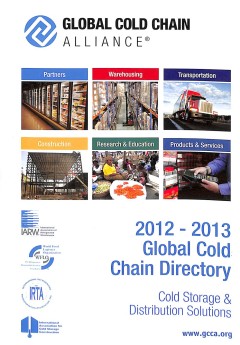
Global cold chain directory 2012 - 2013 : cold storage & distribution solution
Global cold chain directory 2012 - 2013 : cold storage & distribution solution
- Edisi
- -
- ISBN/ISSN
- -
- Deskripsi Fisik
- 464 p., 26 cm
- Judul Seri
- -
- No. Panggil
- LC 388.0425 GLO g
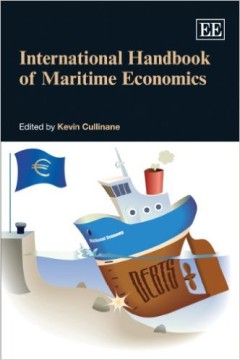
International Handbook of Maritime Economics
This timely and comprehensive new Handbook brings together an unrivaled group of distinguished scholars and practitioners to provide in-depth analysis and a contemporary perspective on a wide-ranging array of topics in maritime economics. Inherently global in nature, the economics of the maritime sector has proved pivotal in facilitating globalization and international trade. This HandbOOK o…
- Edisi
- -
- ISBN/ISSN
- 978-1-84720-933-7
- Deskripsi Fisik
- xix, 497 hlm., 21 cm
- Judul Seri
- -
- No. Panggil
- TXT MR CUL i

THE ROLE OF TRANSPORTATION IN LOGISTICS CHAIN
The operation of transportation determines the efficiency of moving products. The progress in techniques and management principles improves the moving load, delivery speed, service quality, operation costs, the usage of facilities and energy saving. Transportation takes a crucial part in the manipulation of logistic. Reviewing the current condition, a strong system needs a clear frame of logist…
- Edisi
- Vol. 5, pp. 1657 - 1672, 2005
- ISBN/ISSN
- 1657 - 1672
- Deskripsi Fisik
- 16 p.
- Judul Seri
- Proceedings of the Eastern Asia Society for Transportation Studies
- No. Panggil
- ATC LO TSE t

Unified heuristics to solve routing problem of reverse logistics in sustainab…
A reverse logistics problem, motivated by many real-life applications, is examined where bottles/cans in which products are delivered from a processing depot to customers in one period are available for return to the depot in the following period. The picked-up bottles/cans need to be adjusted in the place of delivery load. This problem is termed as simultaneous delivery and pick-up problem wit…
- Edisi
- Vol. 41, No. 3, March 2010, 337–351
- ISBN/ISSN
- 1464–5319
- Deskripsi Fisik
- 16 p.
- Judul Seri
- International Journal of Systems Science
- No. Panggil
- ATC LO ANB u

The Third-Party Logistics Services and Globalization of Manufacturing
Cross-border production chains of manufacturing require coordination and logistics. Third-party logistics services have thus taken this role as a link in the globalization of economic activities. Distriparks, a provider of total logistics to manufacturing, have emerged in Singapore to offer customized distribution and inventory management. Established as a traditional entrepoˆt by internationa…
- Edisi
- Vol. 7, No. 1, 89–104, 2002
- ISBN/ISSN
- 1469-9265
- Deskripsi Fisik
- 18 p.
- Judul Seri
- International Planning Studies
- No. Panggil
- ATC LO ZHU t

The modelling of factors determining the goods and traffic flows movement in …
The purpose of this atticle is to model the factors determining the goods traffic along the logistical channels located in various geopolitical regions on the basis of the transport network. The attention is focused on theoretical presumption of logistical channels formation in a logistical system. In this modeling the factors which determine the formation of the goods flow along the subsystems…
- Edisi
- 2003, Vol XVIII. No 1, 18-22
- ISBN/ISSN
- 1648-3480
- Deskripsi Fisik
- 6 p.
- Judul Seri
- Transport
- No. Panggil
- ATC LO JAR t

The Limits of Public Policy Intervention in Urban Logistics: Lessons from Vic…
For over 15 years, the subject of urban logistics has preoccupied many stakeholders, including both private and public decision-makers. The purpose of this paper is to present a study of the limits of public policy regulations restricting vehicle access to limited traffic zones to promote the use of urban consolidation centres (UCCs). After examining the main technical and economic aspects of i…
- Edisi
- Vol. 21, No. 10, 1528–1541
- ISBN/ISSN
- -
- Deskripsi Fisik
- 15 p.
- Judul Seri
- European Planning Studies
- No. Panggil
- ATC LO VIL t

The Coming of Age of Business Logistics
This study reviews the admission criteria for a "nontraditional" MBA program by investigating a group of students who in academia. This article reviews past and current trends in the discipline of logistics and reports on the growing placement opportunities for students with degrees in business logistics as more firms create formal logistics organizations and solicit college graduates with cour…
- Edisi
- -
- ISBN/ISSN
- -
- Deskripsi Fisik
- 5 p.
- Judul Seri
- Journal of Education for Business
- No. Panggil
- ATC LO RUS t

System reliability for a multistate intermodal logistics network with time wi…
Network structures have been diffusely adopted in logistics systems, where the most critical target is completing the delivery within the promised timeframe. This paper focuses on a single commodity in a multistate intermodal logistics network (MILN) with transit stations and routes to involve three parameters: a route’s capacity, delivery time and time window. There is a carrier along each r…
- Edisi
- 2016
- ISBN/ISSN
- 1366-588X
- Deskripsi Fisik
- 14 p.
- Judul Seri
- International Journal of Production Research
- No. Panggil
- ATC LO LIN s

Sustainability assessment of food chain logistics
Food chain logistics plays an important role in the sustainability performance of the food sector. Therefore, project SCALE (Step Change in Agri-food Logistics Ecosystems) started as a collaborative international project, aiming for tools and frameworks for the food sector to make a step change in operational practices. A sustainability framework is introduced to propose a structured and ration…
- Edisi
- Vol. 18, No. 2, 101–117
- ISBN/ISSN
- 1469-848X
- Deskripsi Fisik
- 18 p.
- Judul Seri
- International Journal of Logistics Research and Applications
- No. Panggil
- ATC LO BLO s

Research on public logistics centre as tool for cooperation
This paper focuses on logistics centre concept and benefits for users. Intermodal benefit, forwarders impact, IT solutions, new transport flows due to synergy, better supply chain management, additional services, cost sharing, economies of scale, quality of the services, know-how, joint marketing impact, and benefit for growth of third-party logistics services are presented. The main bottleneck…
- Edisi
- 2007, Vol XXII, No 1, 50–54
- ISBN/ISSN
- 1648-3480
- Deskripsi Fisik
- 6 p.
- Judul Seri
- Transport
- No. Panggil
- ATC LO JAR r
 Karya Umum
Karya Umum  Filsafat
Filsafat  Agama
Agama  Ilmu-ilmu Sosial
Ilmu-ilmu Sosial  Bahasa
Bahasa  Ilmu-ilmu Murni
Ilmu-ilmu Murni  Ilmu-ilmu Terapan
Ilmu-ilmu Terapan  Kesenian, Hiburan, dan Olahraga
Kesenian, Hiburan, dan Olahraga  Kesusastraan
Kesusastraan  Geografi dan Sejarah
Geografi dan Sejarah